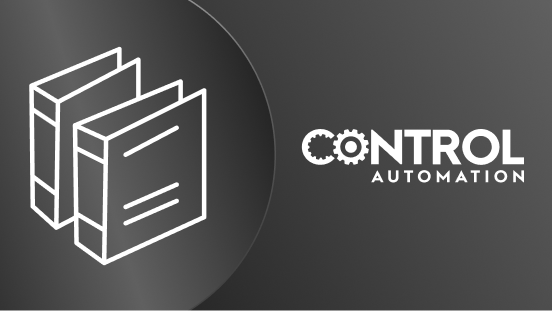
An electric motor is often used as a discrete control element in a control system if driving a pump, conveyor…
Textbook

Human-machine interfaces, or HMIs, are a critical part of nearly all control systems, complementing the…
Textbook

Creative Commons Attribution 4.0 International Public License By exercising the Licensed Rights (defined…
Textbook

In the United States, the most common language used to program PLCs is Ladder Diagram (LD), also known as…
Textbook

Learning PLC programming is a very important skill. If your job involves programming, then you will likely…
Textbook

All masses require force to accelerate (we can also think of this in terms of the mass generating a reaction…
Textbook

An important type of “accessory” relay, especially for legacy electromechanical protective relays,…
Textbook

The simple PLC ladder diagram (LD) commands consist of contacts and coils, arranged in sequences that mimic…
Textbook

The two “process variables” we rely on most heavily in the field of electrical measurement and…
Textbook

Electromechanical relays may be connected together to perform logic and control functions, acting as logic…
Textbook

Disconnect Switches Disconnects are switches designed to isolate sections of a power system in case of damage…
Textbook

The digital multimeter (DMM) is quite possibly the most useful tool in the instrument technician’s…
Textbook

Labwork is an essential part of any science-based curriculum. Here, much improvement may be made over the…
Textbook

There is much to be said for neatness of assembly in electrical signal wiring. Even though the electrons…
Textbook

Circuit breakers used in residential, commercial, and light industrial service are self-tripping devices: they…
Textbook

Although it seems each model of PLC has its own idiosyncratic standard for programming, there does exist an…
Textbook

Modern analog-to-digital converters are phenomenally accurate, dependable, repeatable, and surprisingly…
Textbook

One of the fundamental laws of electric circuits is Kirchhoff’s Current Law, which states the algebraic…
Textbook

Regulating the electric power sent to an electric motor is a task performed by high-speed switching…
Textbook

Using filter cells to eliminate wavelengths associated with interfering gases is called positive filtering in…
Textbook

DC electric motors generate torque by a reaction between two magnetic fields: one field established by…
Textbook

The concepts of calibration (trimming) and ranging are often difficult for new students of instrumentation to…
Textbook

A very common form of on/off valve used for pneumatic and hydraulic systems alike is the solenoid valve. A…
Textbook

Any conductor possesses a characteristic called inductance: the ability to store energy in the form of a…
Textbook

In the United States, the most common language used to program PLCs is Ladder Diagram (LD), also known as…
Textbook

There is much to be said for neatness of assembly in electrical signal wiring. Even though the electrons…
Textbook

Lipták, Béla G. et al., Instrument Engineers’ Handbook – Process Measurement and Analysis Volume I,…
Textbook

A very common method for directly controlling low flow rates of fluids is to use a device known as a metering…
Textbook

Abdelaziz, Ahmed (June 2014) Identified numerous typographical errors throughout the book, mostly repeated…
Textbook

Sometimes we encounter a diversity of instrument signal standards in one control system. Such is the case with…
Textbook

Three-phase AC is the dominant mode of electric power generation and distribution in modern societies.…
Textbook

An extremely important topic in engineering is that of transfer functions. Simply defined, a transfer function…
Textbook

A simple control system drawn in block diagram form looks like this: Information from the measuring device…
Textbook

A unique form of differential pressure-based flow measurement deserves its own section in this flow…
Textbook

Some problem-solving techniques are unique to quantitative problems, involving mathematical calculations. In…
Textbook

Disturbances in the liquid tend to complicate liquid level measurement. These disturbances may result from…
Textbook

While 50 and 51 (instantaneous and time overcurrent) relay functions monitor line current magnitude and guard…
Textbook

The fundamental principle of electromagnetism is that an electric current will create a magnetic field at…
Textbook

An on/off valve is the fluid equivalent of an electrical switch: a device that either allows unimpeded flow or…
Textbook

One of the great benefits of digital technology is the ability to communicate vast amounts of information over…
Textbook
